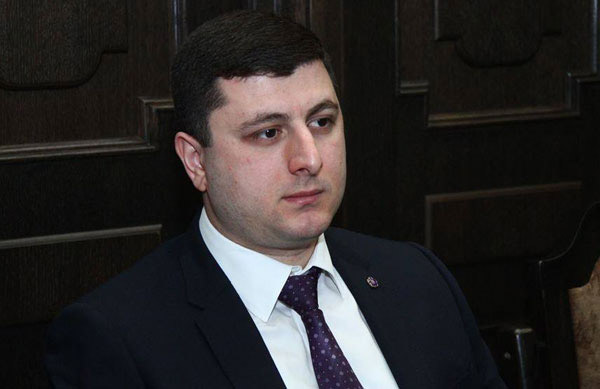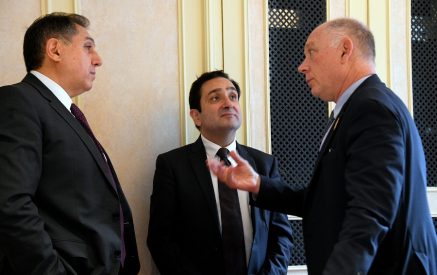According to politician Tigran Abrahamyan, all the possibilities for the political dialogue on Nagorno-Karabakh conflict have not yet been exhausted
– After the four-day war, a completely new situation has been created for Karabakh conflict settlement. The OSCE Minsk Group co-chairs, various international instances, however, repeat the same allegations that were made during these years. Is there an opportunity for political dialogue with Azerbaijan about which Russian Foreign Minister Sergey Lavrov stated in Yerevan?
– It should be stated that indeed, a new situation has been created after the April events. During the Nagorno-Karabakh peace process, Armenia has toughened its stance driven by the resumption of hostilities by Azerbaijan while Azerbaijan consistently leads the process to a final failure. All the possibilities for the political dialogue have not yet been exhausted, however, Azerbaijan needs time to return to the negotiating table. It is hard to expect positive results from the dialogue when Azerbaijan not only continues to accumulate weaponry and manpower in the armed conflict zone but also intensely shells the Armenian positions and residences.
– At this stage, again taking the initiative of the settlement of the conflict, the Russian side announced that Lavrov is coming with new proposals. RA President Serzh Sargsyan, in his recent interview with the American newspaper, has said that Lavrov has not made any new proposals. Why did Sergey Lavrov put the 1994-1995 treaty into circulation? Were they at hand to the Armenian side?
Read also
– There is one thing that should be made clear. The Russian initiative is agreed to by the OSCE Minsk Group other co-chair countries, and Russia’s activeness should be viewed in this context. As for the so-called “Lavrov proposals”, therewith the Russian media were solving at least two problems: they were “reconnoitering” the public opinion and emphasizing the role of Russia in the “force majeure” situation. After the four-day war, Azerbaijan does everything for the adoption of a new main document on the cease-fire in the Armenia-Azerbaijan format, which was contrary to the vital interests of the Armenian side. The 1994 ceasefire and the 1995 ceasefire regime reinforcement agreements were in the tripartite format: Armenia- Nagorno-Karabakh-Azerbaijan. Azerbaijan’s efforts to oust Artsakh from these important documents failed. In this terms, the reaffirmation of RF Foreign Ministry’s posture was very important.
– President Sargsyan’s interview with Bloomberg media company became a ground for analysis in the Russian press that Armenia gives up the negotiations. Is there such a thing?
– Azerbaijan is trying to circulate this thesis in the international organizations for throwing the cloak of an aggression from it. In reality, it is clear to everyone on who, when and why the hostilities were initiated. The statements that Armenia gives up the negotiations are far from being true. Irrespective of the fact that Yerevan officially has toughened its stance in the negotiations due to some obvious reasons, the peaceful settlement has been and continues to be the preferred way of the Nagorno-Karabakh conflict settlement for Armenian. Another question that Azerbaijan, incited by its sponsor Turkey, leads the process to escalation, by putting all that was possible to achieve in the last two decades at risk. Armenia only states Azerbaijan’s leaving the negotiation table and indicates the steps that will enable it to return to the negotiation process.
Interview by Nelly GRIGORYAN

























































